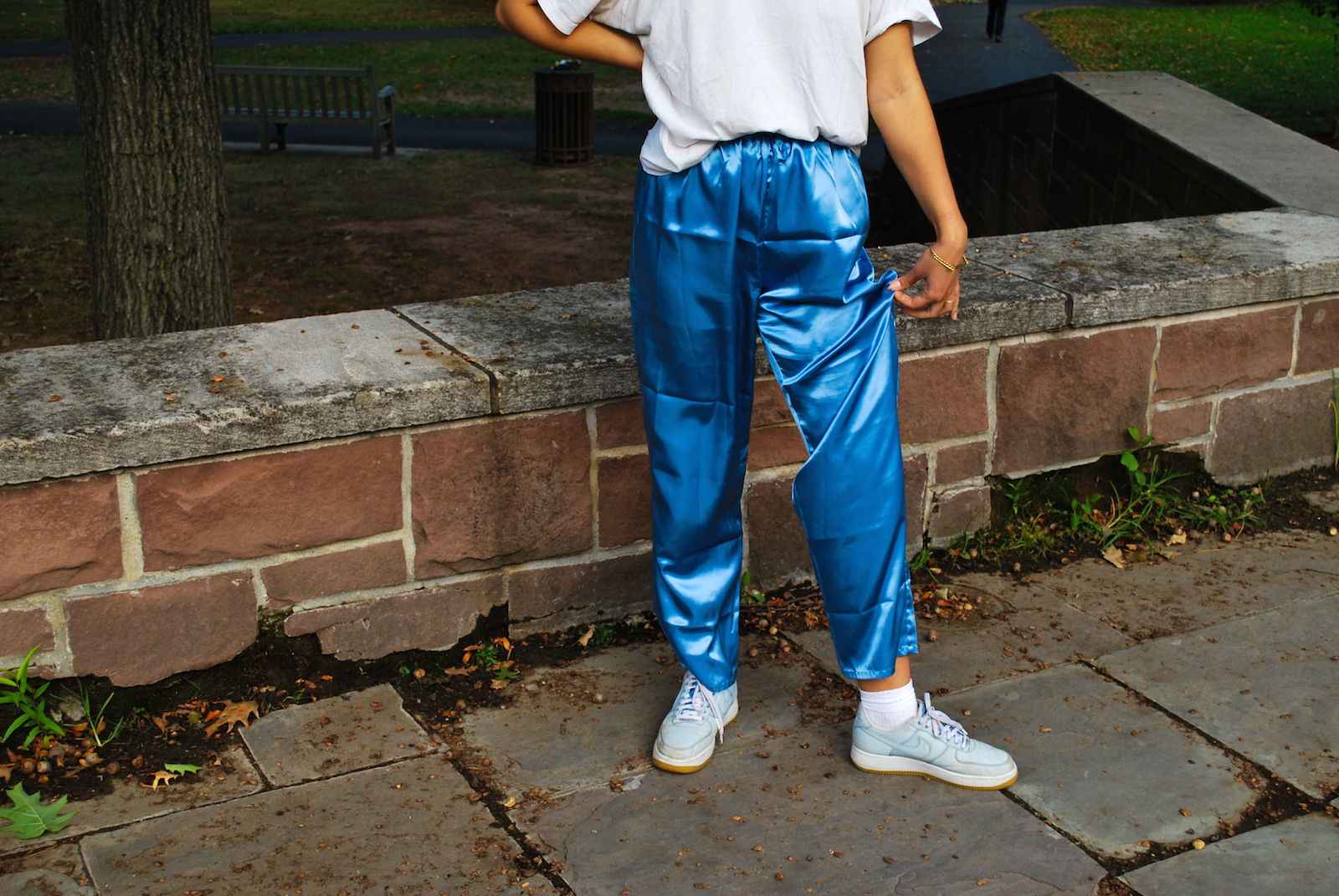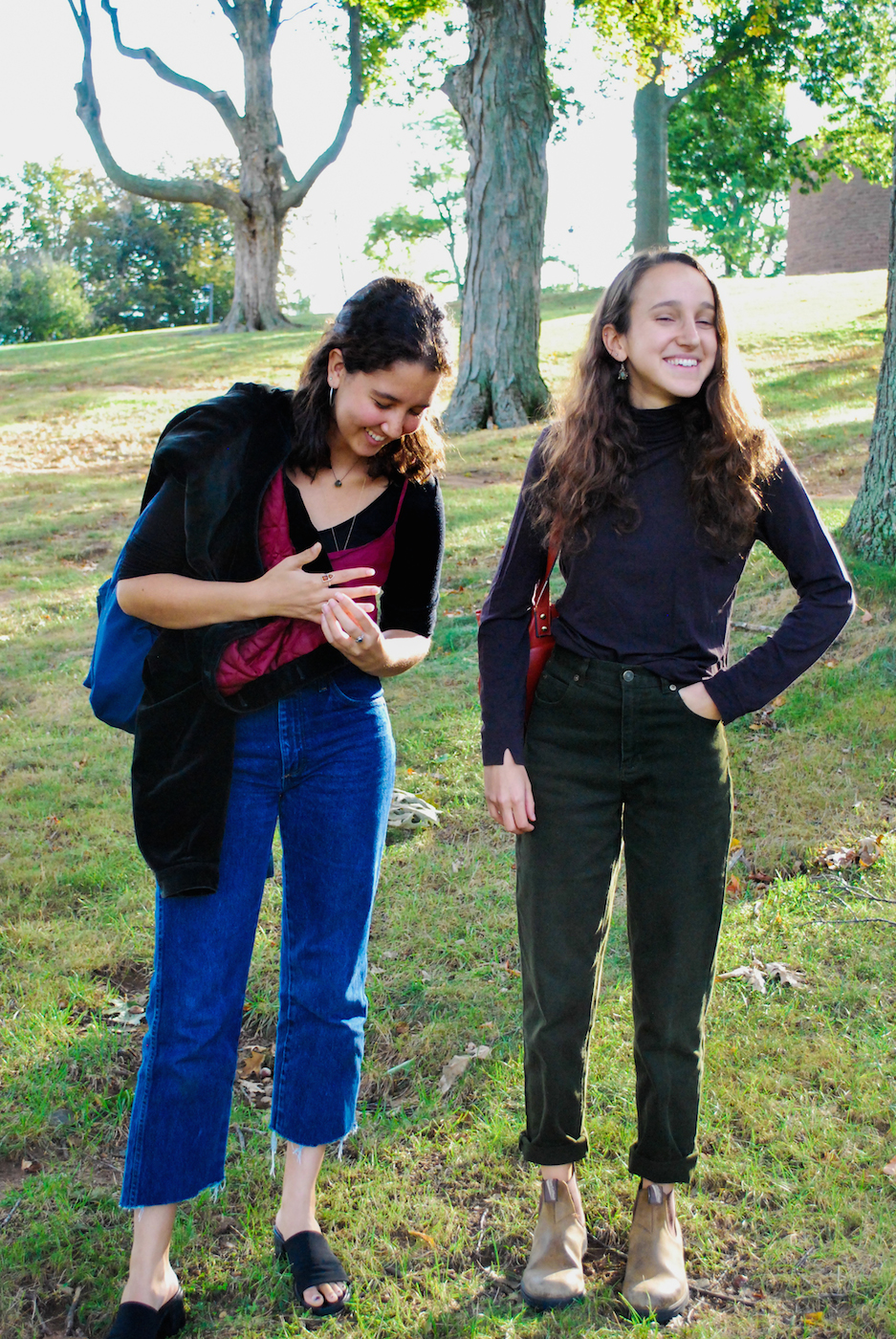There is perhaps no other store as frequented by Wesleyan’s myriad style-savvy students than Savers Thrift Store. Often overlooked, sometimes cramped, overwhelmingly fluorescent, and unapologetically evocative of small town America, the nationwide thrift store has quickly become the mainstay supplier of many students’ wardrobes, offering seemingly unlimited quantities of Crayola-colored anoraks, stiff baggy denim, and baby graphic tees, most of which are under $10 and complete with the perfect level of wear typical of an ex-boyfriend’s sweater or a beloved hand-me-down from a family friend.
But this doesn’t quite articulate the feeling of walking in with no expectations and leaving with the perfect suede jacket or a pair of Levi’s that fit you like a glove or the inexplicable splendor of scoring a designer piece for a fraction of its retail value. In order to fully grasp these feelings (and explore other sides to the experience that exceed the sartorial), The Argus took to the streets, where Savers-wearing students abounded.
“Thrifting has [a lot] to do with accomplishing a ‘look’ that you put in effort to make by going through a bunch of stuff and scoring something exciting,” Charlotte Strange ’19 said, wearing perfectly broken-in black jeans that one dreams of stumbling upon at their local thrift. “[Ultimately,] I think the popularity of thrifting with college students definitely comes down to accessing cheap clothing.”
While necessary to some, the phenomenon of thrifting among shoppers who do not do it out of necessity, of course, can be problematic.
“There is also a more complicated issue of appropriating working class presentation, especially considering the fact that most college students come from financially well-off backgrounds and don’t really need to worry about how much clothes cost, but that is definitely a more complicated notion,” Strange said.
Like many students here, Strange is not new to thrifting; in her hometown of Portland, Ore., a 147,000-square-foot Goodwill outlet—lovingly coined “the Bins”—reigns supreme among locals and college students alike, well-known for its $2/pound deals and rough-around-the-edges atmosphere (shoppers have been known to fight over certain pieces and are advised to come wearing gloves). Some of Strange’s favorite Bins finds include white painter’s jeans and silky slip dresses, pieces which she has not necessarily had difficulty finding here but which ring in at slightly steeper prices.
Students from larger coastal cities were not always as lucky, with pickings often reduced to highly-curated vintage stores and picked-over consignment boutiques.
“I got kind of sick of the LA thrifting scene,” Josh Rabineau ’20 said, who dons his most treasured Saver’s find: a navy blue and red velour tracksuit. “Compared to here, I didn’t do much thrifting at all.”
“I didn’t go thrifting that much; I was more of a vintage person,” Saam Niami Jalinous ’20 said. “My friends and I had to drive super far to go to outlet stores similar to Savers because the ones in Oakland [CA] were so picked over.”
These perspectives are by no means an exaggeration. Los Angeles and New York City in particular boast a heavy stock of secondhand stores, each with a not-so-always-unique selection of hand-selected designer goods and “vintage” denim that will set you back hundreds of dollars. In comparison, Savers is nothing short of a gold mine, offering the prospect of unearthed gems with each and every visit. The five-plus stores located within a 20-minute car ride of campus ensure that these gems never expire; a general lack of retail prospects this close to Wesleyan make it the easiest and most rewarding place to shop.
According to many students, though, there can sometimes be a limit.
“I feel like Savers is more a place to get T-shirts and jeans,” Rachel Rosin ’19 said. “A nice dress or skirt is a really rare find, unlike at New York’s more curated secondhand boutiques.”
Rosin has only gone to Savers once so far this school year, but she has emerged with some of her favorite thrifted pieces ever: vintage moss-colored jeans and a cheeky T-shirt with “Let’s talk about me!” written above two pink high heels. Like Rosin, Sarah Sanders-Messmann ’19 reports similar finds, with a bejeweled “Mamma Mia!” graphic tee, blue Wrangler jeans, and mule sandals rounding out some of her favorites.
“I think that thrifted pieces are far more personalized touches to my style,” she said. “Pretty much all of my most prized items of clothing are thrifted because they’re so much more unique than a T-shirt from [a fast fashion store].”
Yet, while keeping these assertions in mind, one question still remains: Beyond cost and convenience, why does Savers pervade so many of Wesleyan students’ wardrobes?
“Ultimately, it has the aesthetic that people want,” Sanders-Messmann said.
“I think it really comes down to the fact that Wesleyan students really like to try new things,” Rosin added. “Nobody is afraid to take style risks here, and Savers is a cheap way to do that.”
The Argus is planning on doing a follow-up story to this article on the ethics of thrifting among those who do not do it out of necessity, particularly on a college campus like Wesleyan’s. Please do not hesitate to contact us if you would like to be featured (lsperry@wesleyan.edu, jlahut@wesleyan.edu, ecdavis@wesleyan.edu).
- Lily Sperry, Contributing Writer
- Lily Sperry, Contributing Writer
- Lily Sperry, Contributing Writer
- Lily Sperry, Contributing Writer
-
Hm
-
Lily Sperry
-
-
Eddie Money’s Money



